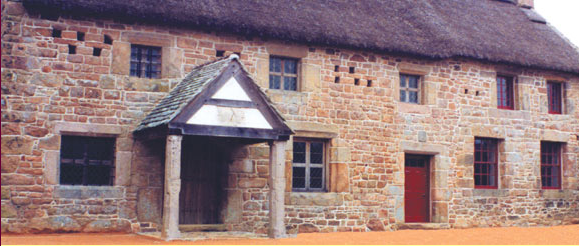About
Site Directory
Copyright © 2025 www.jerseyinsight.com
All Right Reserved
powered by 
Copyright © 2025 www.jerseyinsight.com
All Right Reserved
powered by 
When one approaches Hamptonne Farm from the Waterworks Valley, the impression is of an ideal pastoral scene, with the farm’s golden granite contrasting agreeably with the richly varied greens of the surrounding landscape.
The site, which was purchased by the Trust in 1987, was fully restored by the Société Jersiaise and is now run as a Country Life Museum by the Jersey Heritage Trust and displays the key aspects of Jersey’s farming heritage
Unfortunately due to financial constraints Hamptonne will not be open to the public on a regular basis during 2010. For further information please contact Jersey Heritage on www.jerseyheritage.org
Hamptonne is an important farm complex, constructed during the 17th, 18th and 19th centuries, and comprising of 3 houses, a colombier, several outbuildings and an orchard. Each house dates from a different century, and is linked to one of the families having lived in Hamptonne: the Langlois Building (17th), the Hamptonne House (18th) and the Syvret Building (19th). The colombier is one of only two square colombiers in the island, and although restored in 1674, probably dates from the 15th century. The farm outbuildings were mainly added during the 19th century.
The large double entrance arch on the road is one of the finest in the island and one of only two examples bearing a date before the Civil War. It is dated 1637 and bears the arms of Hamptonne, with the initials LH and EH. It has a moulded beading in place of the more usual chamfer.
Inside the courtyard is the Hamptonne House, facing south. The arch of the front door has double voussoirs, and the chamfer stop on the left has a Fleur de Lys. The three arch stones have moulded beading, but the upright portions have a plain chamfer. Standing on the front of this door are porch pillars bearing the Hamptonne Arms.
Over the centuries, this house has been transformed a number of times: originally, it was a large, single room open to the rafters; the first floor was added to allow the farmer more privacy from the servants. Access was provided by building a stair tower (tourelle) on to the back of the house. At the end of the 17th century a two-storey extension (the Dower Wing) was added to the eastern gable in order to make the house larger.
On the other side of the courtyard is the Langlois Building, with its typical medieval Britton architecture: the animals and stores were kept downstairs and people lived in the rooms upstairs, which were reached by an outside staircase. The doorway is rather unusual, with an eleven-stones arch (the average in Jersey being nine). Inside, most noticeable is the beautiful fireplace with projecting jambs and large acanthus leaf chamfer stops.
The western buildings alongside La Rue de La Patente comprises the Syvret house, dated from the 1830s. The rooms are unusually tall and grand for a Jersey farmhouse and are typical of the townhouses built in St. Helier at this time. Attached to the house is the pressoir (i.e. the cider barn), which contains an apple crusher, a twin-screw apple press and barrels. Cider is still produced every October using this equipment.
On the north side of the upper courtyard are the outbuildings added by the Syvrets in the 19th century: stables, carriage house, boulangerie, washhouse, etc. Completing the farm complex is the orchard, which has recently been replanted, although it is believed that an orchard was established on the site in the 17th century.
visit us at:
www.nationaltrustjersey.org.je
